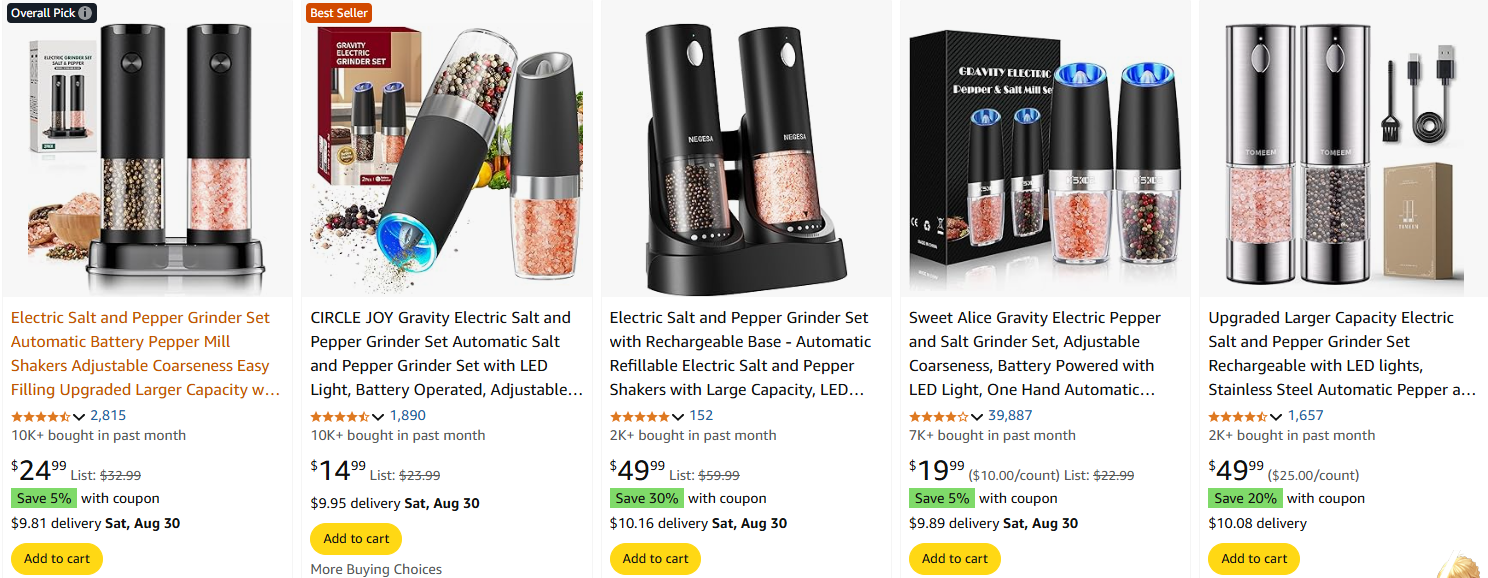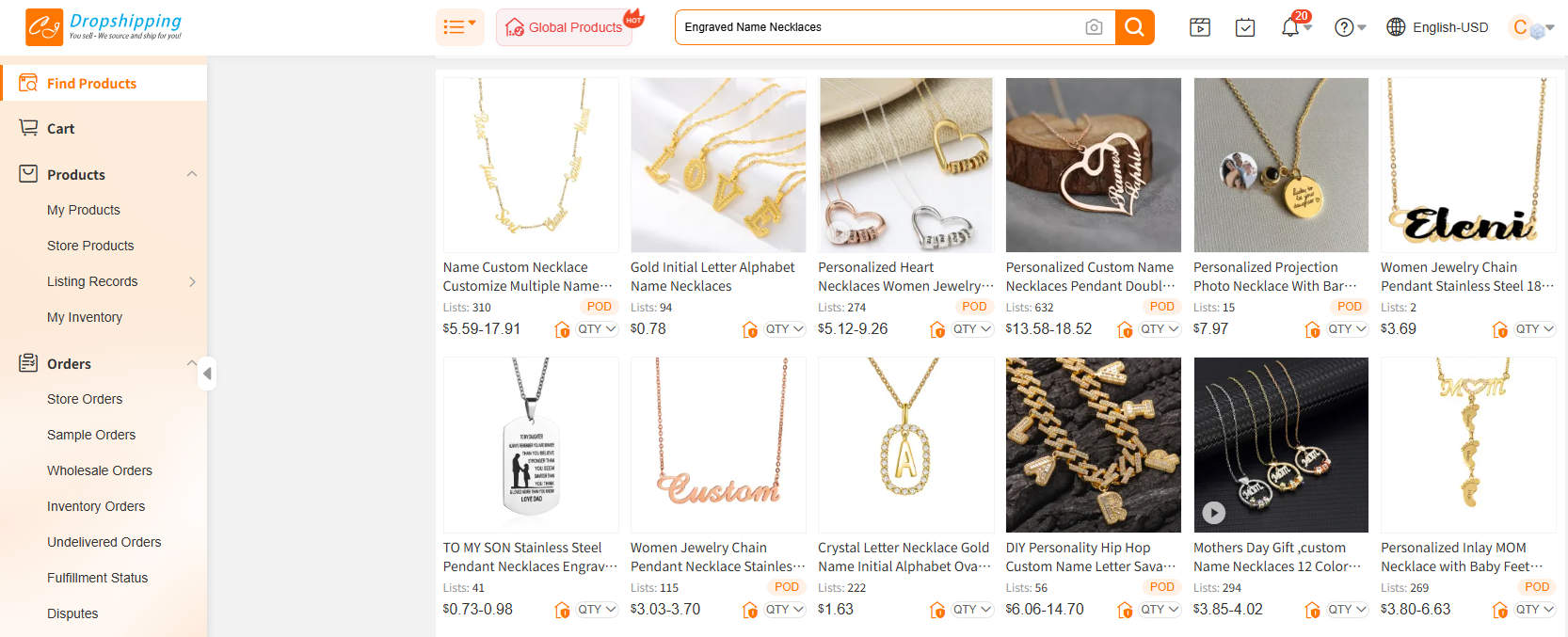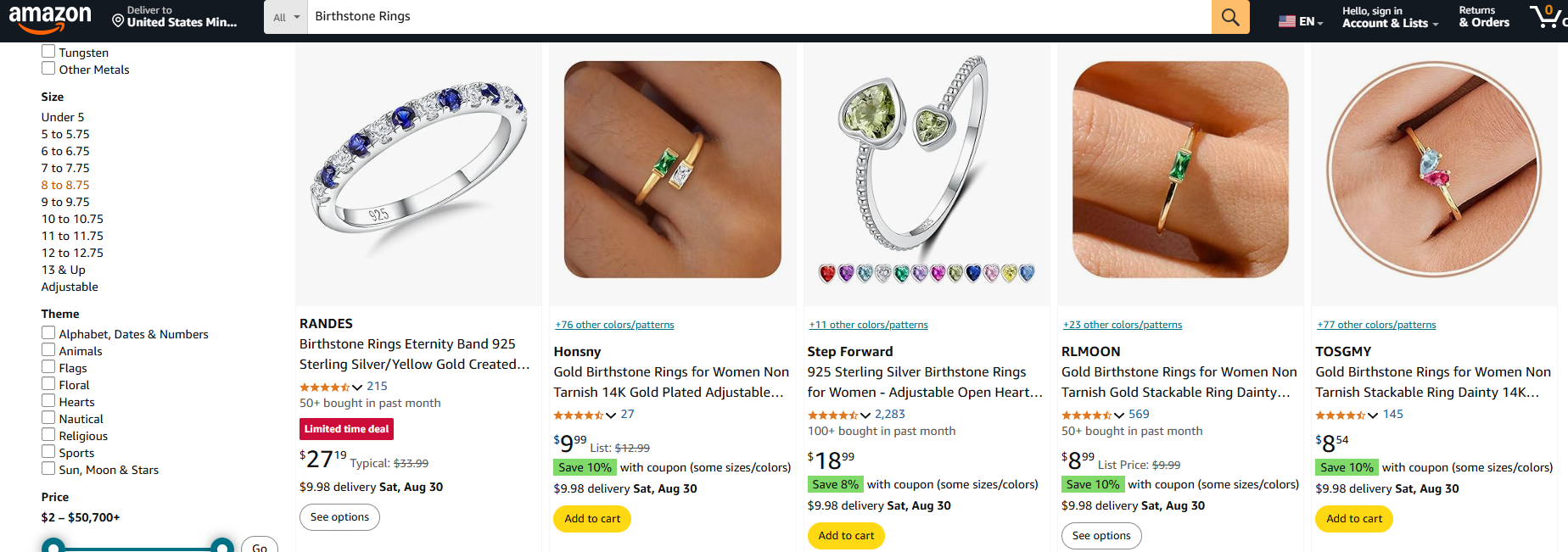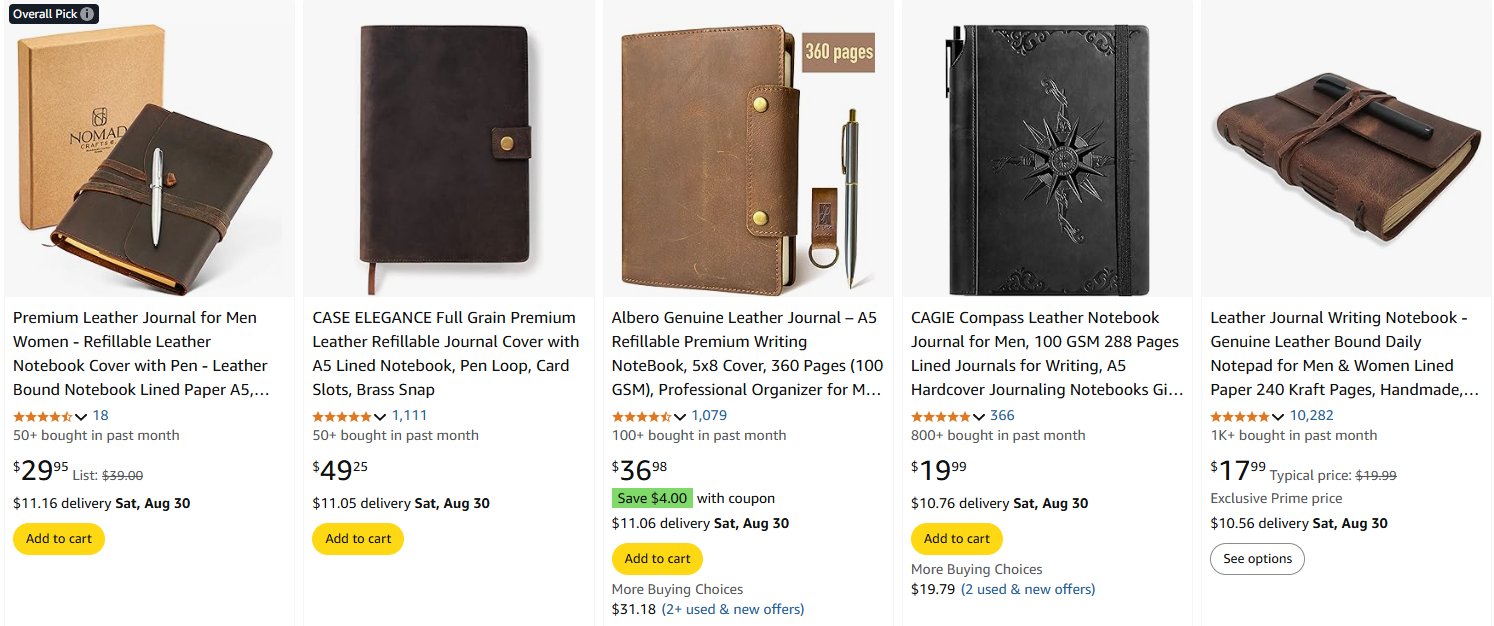If you’ve been exploring dropshipping for a while, you’ve probably noticed a common trap: selling products that move quickly but barely make a profit. It can feel exciting to watch orders come in, but once you subtract sourcing costs, shipping fees, and marketing spend, the margins can be razor-thin. That’s why smart sellers in 2025 are focusing on high-margin products — items that not only sell well but also leave plenty of room for profit after all expenses are paid.
The beauty of high-margin products is that they give you flexibility. You can reinvest in advertising, experiment with new marketing channels, and absorb the occasional return without it eating into your bottom line. They also tend to attract more committed buyers — customers willing to pay for quality, unique designs, or specialized features.
We’ll walk through 12+ dropshipping products with high profit margin that are trending right now and suitable for beginners. Each suggestion comes with practical notes on why it sells, how to position it for maximum profit, and what to watch for when sourcing. By the end, you’ll have a clear set of product ideas you can start testing — and the sourcing strategies to back them up.
What Makes a Product High-Margin in 2025?
A high-margin product isn’t just something you can sell for a high price — it’s something that leaves you with a healthy profit after you account for sourcing costs, shipping, transaction fees, and marketing. In 2025, the most profitable dropshipping products usually share a few common traits:
-
High Perceived Value, Low Production Cost
The buyer sees the product as premium or unique, but your sourcing cost stays low enough to maintain a strong markup. For example, a handcrafted-look ceramic vase might cost $12 to source but can sell for $45 or more if presented well. -
Niche Audience Willing to Pay More
Products aimed at a specific group — such as pet owners, hobbyists, or luxury skincare fans — often carry higher margins because buyers are motivated by passion, lifestyle, or status rather than price alone. -
Low Return Risk
The fewer returns you process, the more profit you keep. High-margin products tend to have clear specifications, consistent quality, and low likelihood of sizing or fit issues. Amazon’s own data shows that apparel and shoes often have return rates above 15%, while categories like home decor and hobby tools stay under 5%. -
Potential for Branding and Differentiation
When a product allows for customization, premium packaging, or limited-edition variations, you can justify a higher price point and reduce direct price competition.
Understanding these factors before you launch helps you avoid the “volume trap” — where you’re selling a lot but earning very little. Instead, you’ll be focusing on items that give you both healthy margins and room to grow.
12+ Dropshipping Products with High Profit Margin
High-margin products aren’t just about charging more — they’re about finding items where buyers are happy to pay for perceived value while your costs stay low enough to give you healthy profit room. Here’s a carefully chosen list across multiple niches, with practical tips you can apply immediately.
Luxury Home Decor – High Profit Margin Dropshipping Products
1. Handmade Ceramic Vases

-
Why It Sells: Minimalist and artisanal designs are trending on Pinterest and Instagram, driving consistent demand. Buyers often pay for “unique” pieces that feel personal.
-
Profit Tip: Lifestyle photography and limited-edition drops can justify a 200%+ markup.
-
Sourcing Tip: Look for suppliers offering small-batch runs and optional branding — CJdropshipping can help custom source unique patterns or colors.
2. LED Ambient Lighting Fixtures

-
Why It Sells: With the rise of home offices and streaming setups, mood lighting has become a daily upgrade.
-
Profit Tip: Color-changing or smart-app control features can increase the selling price by 30–40%.
-
Sourcing Tip: Confirm electrical safety certifications before listing to reduce return risk.
Specialized Kitchen Gadgets – High Profit Margin Dropshipping Products
3. Automatic Electric Salt & Pepper Grinders

-
Why It Sells: Offers convenience and a touch of luxury to a common kitchen task.
-
Profit Tip: Selling as a set allows you to increase the average order value to $40–$50.
-
Sourcing Tip: Choose stainless steel or premium finishes to strengthen perceived quality.
4. Japanese Damascus Chef Knives

-
Why It Sells: High perceived craftsmanship, backed by a reputation for durability and sharpness.
-
Profit Tip: Position as a “lifetime kitchen investment” and target cooking enthusiasts.
-
Sourcing Tip: Verify material specs and blade authenticity to avoid negative reviews.
Personalized Jewelry – High Profit Margin Dropshipping Products
5. Engraved Name Necklaces

-
Why It Sells: Emotional attachment drives purchase decisions; perfect for gifting.
-
Profit Tip: Multiple font options and metal finishes expand your market.
-
Sourcing Tip: Partner with POD (print-on-demand) jewelry services to avoid holding inventory.
6. Birthstone Rings

-
Why It Sells: Combines personalization with the evergreen appeal of jewelry.
-
Profit Tip: Promote during birthdays, anniversaries, and holiday seasons for higher conversions.
-
Sourcing Tip: Offer hypoallergenic materials to justify higher pricing.
Premium Pet Accessories – High Profit Margin Dropshipping Products
7. Orthopedic Pet Beds

-
Why It Sells: Pet health is a high-priority purchase; owners invest willingly.
-
Profit Tip: Offer size variations to cover different breeds and price tiers.
-
Sourcing Tip: Look for washable covers and high-density foam to reduce return rates.
8. Luxury Leather Pet Collars

-
Why It Sells: Style-conscious owners treat pets as part of their lifestyle.
-
Profit Tip: Personalization with engraved tags can raise margins by 25–40%.
-
Sourcing Tip: Source adjustable designs and quality stitching for durability.
High-End Beauty Tools – High Profit Margin Dropshipping Products
9. LED Light Therapy Facial Masks

-
Why It Sells: Skincare enthusiasts are investing in at-home spa devices; the global beauty device market is projected to grow over 10% annually.
-
Profit Tip: Position as a long-term skincare investment rather than a one-time gadget.
-
Sourcing Tip: Ensure the product meets cosmetic device safety standards in your target market.
10. Professional Hair Clippers

-
Why It Sells: Home grooming saves money and time, appealing to both men and women.
-
Profit Tip: Cordless models with multiple guard sizes can sell at $50–$80.
-
Sourcing Tip: Choose suppliers with ergonomic, low-noise designs for better reviews.
Specialized Hobby & Collectible Items – High Profit Margin Dropshipping Products
11. Premium Leather Journals

-
Why It Sells: Appeals to writers, artists, and gift buyers who value craftsmanship.
-
Profit Tip: Limited-edition covers or refillable pages create repeat purchase potential.
-
Sourcing Tip: Opt for fountain pen–friendly paper to appeal to enthusiasts.
12. High-Quality Model Kits

-
Why It Sells: Collectors and hobbyists are willing to pay more for detailed, authentic designs.
-
Profit Tip: Target niche communities with themed releases (e.g., ships, cars, anime).
-
Sourcing Tip: Work with suppliers who specialize in the category to maintain consistency.
Pricing Strategies to Protect Margins on Dropshipping Products with High Profit Margin
Protecting margin for Dropshipping Products with High Profit Margin starts with a rules-based pricing process rather than gut feel. First, choose a target net margin (I use 30–40%). Then reverse-engineer price from expected ad CAC and fulfillment costs. Example calculation (showing digits): retail price = $49.00. Costs: COGS = $12.00, shipping = $5.00, ads per sale = $10.00, platform fee = 8% of $49.00 = $3.92. Total cost = 12.00 + 5.00 + 10.00 + 3.92 = 30.92. Gross margin = (49.00 − 30.92) / 49.00 = 18.08 / 49.00 ≈ 36.9%. Because 36.9% > 30% target, this SKU passes baseline economics.
Tactical levers you can pull:
-
Bundle to raise AOV: Offer a core product + accessory for a 30–50% higher price but much smaller incremental COGS.
-
Tiered versions: Basic vs Pro — capture price-sensitive buyers while converting upsells.
-
Subscription or replenishment: Convert one-time buyers into repeat revenue to amortize acquisition cost.
-
Shipping engineering: Set a free-shipping threshold (e.g., free over $75) to encourage add-ons.
-
Dynamic CPA caps: Pause campaigns automatically when CPA > allowable CPA (computed from your margin model).
Practical templates:
-
Minimum acceptable price = (Total Cost + Desired Profit) where Desired Profit = Target Margin × Price → solve for Price. A spreadsheet does this automatically.
-
Allowable CPA = Price × Target Margin − (COGS + Shipping + Platform Fees).
Operational shortcut: store these in your product spreadsheet and color-code SKUs that fall below margin floor. If advertising drives CAC above the allowable CPA, stop scaling and either optimize creative or increase price.
Marketing Hooks That Work for Dropshipping Products with High Profit Margin
When you sell Dropshipping Products with High Profit Margin, your creative must justify the premium. High-margin products don’t compete on lowest price — they sell on perceived value, outcomes, and emotion. Effective hooks center on transformation, authority, scarcity and social proof.
Proven hook types:
-
Before → After transformation: Show a clear visual change in 3–5 seconds (problem → solution → happy result).
-
Time-savings or convenience: “Do in 5 minutes what used to take 30” — quantify the benefit.
-
Expert or influencer endorsement: “Recommended by X professional” + a short clip showing the product in professional use.
-
Bundle/limited edition: “Limited run with custom packaging — only 200 available” creates urgency.
-
Risk-reversal: “30-day no-questions refund + free return label” reduces friction for high-ticket buys.
Structure for short video ad (15s blueprint):
-
0–3s: Hook (problem, dramatic visual)
-
3–8s: Solution demo (how product solves it)
-
8–12s: Social proof (review quote or star rating)
-
12–15s: CTA + incentive (e.g., limited discount or free shipping)
Copy snippets you can reuse:
-
“Tired of [pain]? Save [X minutes] every day with [product name].”
-
“[Product name] — professional results without the salon price.”
-
“Limited bundles: free accessory + premium box (while stock lasts).”
Testing approach: run 3 creative angles (demo, UGC testimonial, and lifestyle) for 7–10 days with equal budget; keep the creative with the highest ROAS and iterate with small variations (different CTAs, thumbnails, or opening frames). Use UGC and micro-influencers to lower creative costs and boost authenticity for premium positioning.
Logistics & Fulfillment Tactics to Preserve Profit on Dropshipping Products with High Profit Margin
Logistics is where good margins die slowly. For Dropshipping Products with High Profit Margin, small savings per order compound into big profit protection. Key principles: reduce per-order shipping cost, cut returns, and shorten delivery time to improve conversion.
Tactics that move the needle:
-
Regional warehouses / split-stock: If a SKU’s margin supports it, place inventory in a local fulfillment center near your biggest markets to save last-mile fees and improve delivery speed.
-
Parcel consolidation & packaging optimization: Reduce package dimensions and weight — reengineer inserts and choose lighter materials. Even $0.50 saved per order on 2,000 monthly orders = $1,000 saved per month.
-
Hybrid shipping choices: For low-cost consumables use e-commerce small packets; for higher-value items pick tracked carriers with lower chargeback rates.
-
Prepaid returns & clear policy: Offer an easy returns experience but require the product be returned in resellable condition; negotiate return shipping credits with suppliers if possible.
-
Insurance for high-value items: For items above a threshold, insure transit to prevent margin-draining refunds.
Operational checklist:
-
Measure shipping cost per order weekly and set alert if it grows >10% month-over-month.
-
Track refunds/returns per SKU and flag SKUs with return rate > 8% for deeper QC.
-
Maintain 2–3 backup suppliers and a secondary freight lane (sea & air) to avoid rush air costs during stockouts.
Fulfillment notes: calculate true landed cost including returns and chargebacks before scaling. If your allowable CPA (from pricing model) assumes $5 shipping but actual is $7, adjust price or shipping model immediately. Automate alerts and re-order thresholds in your inventory system so you never pay premium rush fees because of poor forecasting.
How I Validate Dropshipping Products with High Profit Margin Using Data
Validation separates lucky hits from repeatable winners. For Dropshipping Products with High Profit Margin, I use a three-phase, data-driven funnel: demand signal → paid micro-test → post-purchase economics.
Phase A — Demand signal (qualitative + quantitative):
-
Use Google Trends, keyword volume and social listening to confirm upward interest. Look for consistent upward slope over 3–6 months or a stable seasonal spike.
-
Scan competitor ads and marketplace listings for similar products; note price ranges and average review counts.
Phase B — Paid micro-test (controlled experiments):
-
Create 3 ad creatives (demo, testimonial, lifestyle). Run each for 5–7 days with a small budget (e.g., $100–$300 per creative depending on product price). Measure CTR, CPC, and — most importantly — CVR.
-
Compute test CPA and compare to your allowable CPA from pricing model. If allowable CPA is $15 and test CPA = $12, the product is a go for scale. If test CPA > allowable CPA, iterate creative or page—don’t scale.
Phase C — Post-purchase economics:
-
Track actual returns, refunds, shipping variances, and repeat purchase rates over first 30–90 days. Adjust unit economics: update COGS if supplier changes, include real fulfillment costs, and measure Customer Lifetime Value (LTV) for consumables.
-
Use cohort analysis to see if initial buyers convert to repeat customers or if refunds cluster around specific product defects.
Kill rules & scaling rules:
-
Kill if predicted margin < target or if ROAS < threshold after two weeks of sustained testing.
-
Scale if ROAS > target and repeat rates are positive; scale incrementally (20–40% budget increases) and expand creatives.
Tools: Google Trends, Meta Ads Manager, simple tracking spreadsheet or lightweight BI dashboard. Keep every test logged so you build a playbook of creatives, audiences and landing pages that work for high-margin SKUs.
How I Turned an Item into Dropshipping Products with High Profit Margin
Turning a commoditized item into Dropshipping Products with High Profit Margin is a repeatable three-step formula I use: increase AOV, improve conversion, and reduce unit cost. Here’s a real-world playbook I applied.
Step 1 — Increase AOV (Average Order Value):
I bundled a basic kitchen gadget ($12) with an accessory and a recipe e-book. Bundle price = $28. Incremental COGS for the accessory + e-book was $4, so the bundle dramatically increased perceived value while keeping incremental cost low. Bundles also make free-shipping thresholds easier to hit.
Step 2 — Improve conversion:
I rewrote the product listing to focus on outcomes (“measure like a pro in 3 seconds”), added a 10-second demo video, improved hero photos, and replaced the generic title with a benefit-led headline. Conversion rate rose from 1.8% → 2.6% (a 45% relative increase). Better conversion means fixed acquisition spend buys more orders, improving per-order margin.
Step 3 — Reduce unit cost:
With validated demand I returned to the supplier and negotiated lower packaging and unit price (committed to longer-term orders). I also asked for custom-branded boxes for a small upcharge that increased perceived value and allowed a higher retail price. Negotiation outcome: unit price fell from $12.00 → $9.50 after commitment to a 3-month reorder cadence.
Putting numbers together (example digits):
-
New bundle price = $28.00. New unit cost = 9.50 (product) + 1.00 (accessory) + 0.80 (packaging) + 4.00 (shipping & fees) = 15.30. Gross margin = (28.00 − 15.30) / 28.00 = 12.70 / 28.00 ≈ 45.4%.
Outcome & lessons:
-
Bundling raised AOV and allowed higher ad efficiency.
-
Conversion lift dramatically improved CAC efficiency.
-
Supplier negotiation reduced costs and increased margin.
-
Test each change in isolation where possible so you can measure impact.
Replicable checklist: test bundle, measure conversion lift, negotiate supplier terms, then scale creative-tested ads. If any single lever fails to move KPIs, revert and iterate—this staged method reduces cash burn and makes high-margin outcomes predictable.
Where to Source High-Margin Dropshipping Products Reliably
Finding a high-margin product is only half the work — the other half is making sure you can source it reliably and deliver it with consistent quality. In premium or niche categories, one poor-quality batch or a late shipment can erase your profits and damage your brand.
New and experienced dropshippers alike often face the same challenges:
-
Locating suppliers for unique or trending products before competitors do.
-
Testing demand without committing to large, risky inventory purchases.
-
Keeping delivery times short enough to meet premium buyers’ expectations.
One way to address all three is to work with a sourcing partner that combines product discovery, flexible purchasing, global fulfillment, and branding options in one place.
For example, many sellers use CJdropshipping because it offers:
-
Custom Product Sourcing – Request trending or niche products directly from manufacturers.
-
Low or No Minimum Order Quantities – Perfect for testing high-margin items before scaling.
-
Global Warehouses – Store inventory closer to your customers in regions like the U.S. and Europe to shorten delivery times.
-
Custom Packaging & Branding – Upgrade your presentation to justify higher pricing and build recognition.
-
Integration with 15+ Platforms – Connect your store seamlessly with Shopify, eBay, WooCommerce, Shipstation, Etsy, ShopLazza, AllValue, Lazada, TikTok Shop, Nuvemshop, AliExpress, Shopee, Mercado, Temu, and WED2C, making product management and fulfillment far more efficient.
With this setup, you can spend less time chasing suppliers and more time optimizing your listings, marketing your products, and growing your margins.
Beginner Tips for Maximizing Profits with High-Margin Products
High-margin products can transform your dropshipping business — but only if you manage them with the right approach. The key is to balance premium pricing with consistent quality and a smooth customer experience.
1. Start Small and Validate Demand
Begin with small test orders to gauge market interest and spot potential quality issues early. Use this stage to fine-tune your product listings, photos, and descriptions before committing to larger volumes.
2. Elevate Your Product Presentation
In premium markets, first impressions matter. Invest in high-quality product photography, use lifestyle images that show the product in context, and write descriptions that focus on benefits rather than just features. Packaging should match the value you’re asking customers to pay.
3. Offer Fast and Predictable Delivery
Buyers willing to pay more often expect a faster, more reliable delivery experience. Keep a close eye on fulfillment times and consider stocking popular products in warehouses closer to your target markets to shorten delivery windows.
4. Use Strategic Bundling
Pair high-margin products with complementary items to increase the average order value. For example, a luxury pet bed could be sold with a matching blanket, or a premium coffee grinder with specialty coffee beans.
5. Track True Profit Margins
Look beyond the selling price. Factor in sourcing, packaging, shipping, platform fees, advertising, and returns when calculating profit. Small cost changes can have a big impact on margin, so review these numbers regularly and adjust pricing if needed.
6. Expand Through Multiple Sales Channels
Diversifying where you sell reduces risk and opens up new audiences. Consider listing your best-performing high-margin products on multiple marketplaces or adding them to your own branded store to capture repeat buyers.
By focusing on these operational and marketing fundamentals, you can keep your margins strong while building a reliable, long-term customer base for your premium products.
Turn Today’s Ideas into Tomorrow’s Profits
Making a list of high-margin products is the easy part — turning those ideas into consistent revenue is where the real work begins. The sellers who succeed aren’t just the ones who choose the right products, but the ones who take deliberate steps to test, refine, and grow.
If you’ve never sold a premium product before, start with one or two that you genuinely believe in. Put them in front of your audience, watch how people respond, and don’t be afraid to adjust your pricing, presentation, or marketing along the way. The beauty of high-margin products is that even modest sales can generate healthy profits, giving you the space to reinvest in what’s working.
Over time, you’ll build not just a product catalog, but a brand reputation that allows you to command higher prices and attract loyal customers. That’s when you move from “trying dropshipping” to running a profitable, sustainable business.
The best time to start testing is now — before trends peak and competition catches up. Take one product from this list, run your first campaign, and see where it takes you. Small, consistent actions today can turn into tomorrow’s steady profit stream.
FAQ — Dropshipping Products with High Profit Margin
Q1: What margin should I target before scaling a dropshipping product?
A: Aim for at least 30–40% gross margin after all costs (COGS + shipping + fees). That gives room to cover ad spend and returns.
Q2: Can low-priced items become high-margin?
A: Yes — via bundling, subscription, white-labeling, or cutting unit costs through supplier negotiation.
Q3: How much should I spend on initial ad testing?
A: Start small — typically $200–$1,000 depending on product price and niche; the goal is to validate CTR/CVR and an acceptable CPA.
Q4: How do returns affect margin planning?
A: Always include estimated return rates in your margin model. High return items require higher initial margins or stricter product descriptions.
Q5: When should I move stock to local warehouses?
A: When faster delivery improves conversion meaningfully and the increased margin from higher conversion offsets warehousing costs.

